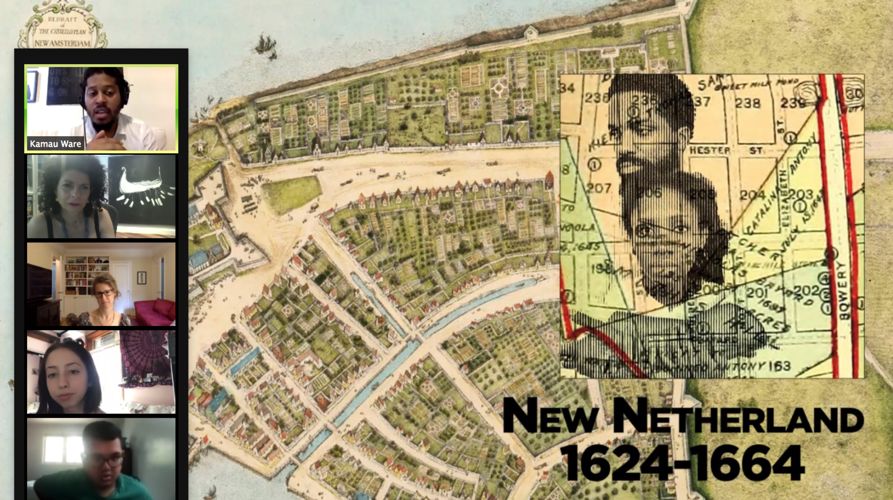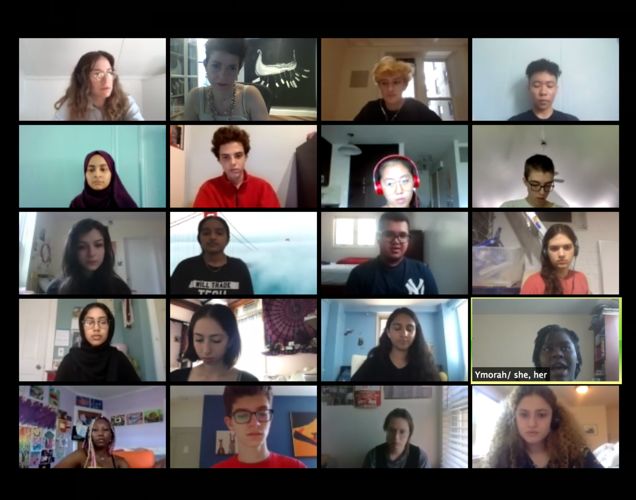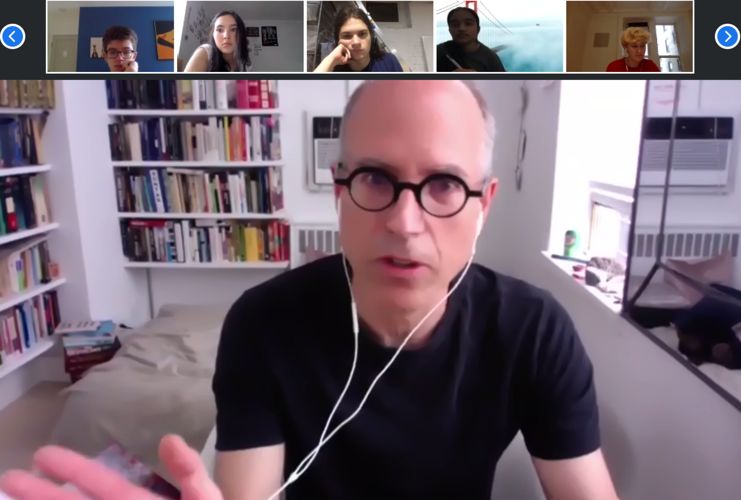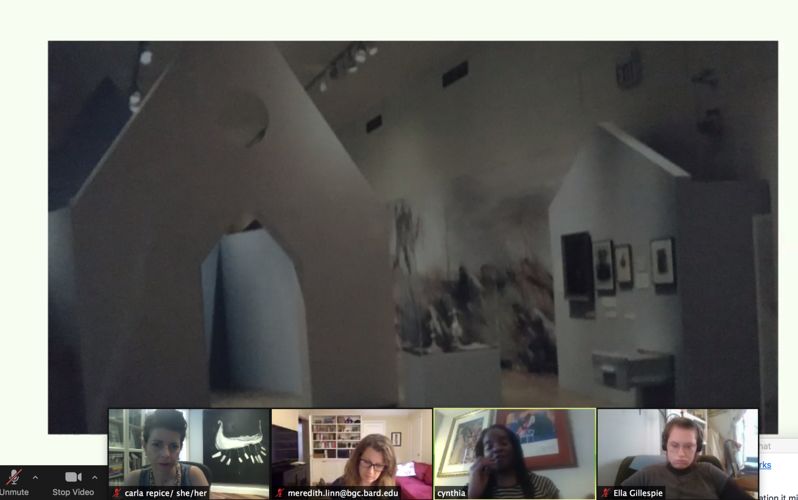Many New Yorkers will remember this summer as one where they were cut off from the human interactions and cultural institutions that make New York City so exciting. For a group of high school students, this summer was made memorable for the connections they made in spite of the challenges posed by the pandemic. These connections were facilitated through the Bard Graduate Center’s teen programs which offer juniors and seniors the chance to critically engage with objects and faculty in the hopes of inspiring a diverse generation of young people to continue to work in this field. Although students were unable to visit museums and libraries, a group of BGC faculty and students under the direction of Senior Manager of Education, Engagement & Interpretation Carla Repice created interactive virtual programs which allowed them to explore new worlds through the study of objects. In August, the teens presented their findings from two exciting projects, shedding light on underground communities of New York City.
In past years, a group of up to twelve students would be chosen from high schools across the city (including Brooklyn Latin School, Marble Hill High School for International Studies, Stuyvesant High School, Manhattan Center for Science and Math, Townsend Harris High School, and NYC Bard High School Early Colleges) to participate in the Teen Thinkers’ Lab— a five week intensive involving daily student and faculty meetups at the West 86th Street campus as well as field trips and onsite research. This summer, the virtual nature of the program meant that double the number of students could participate, so twenty-four Teen Thinkers’ embarked on a project that involved working with objects found near the Bard Graduate Center in a 2011 excavation in Central Park between 82nd and 89th Streets and Seventh and Eighth Avenues. In this excavation, organized by the Institute for the Exploration of Seneca Village History, they discovered remnants of a neighborhood. This neighborhood was founded in 1825, two years before slaves were emancipated in New York, by two African American men and the African Methodist Episcopal Zion Church. They bought plots of land which grew into a community of over two hundred African Americans, Irish and German immigrants called Seneca Village. The village provided a haven for its residents until 1857, when its members were evicted so that Central Park could be built. In this time, they had constructed dozens of houses, a school, churches, and cemeteries, all of which were destroyed and buried. Since then Seneca Village has remained a largely forgotten part of New York City’s history. BGC professor and archaeologist Meredith Linn, who has been involved with the Seneca Village Project since 2004 and helped to develop and teach the Teen Thinkers’ curriculum, elaborated on the importance of introducing them to the findings of this excavation, noting that, “…the City’s seizure of the villagers’ property…was partially predicated on the story that the area’s residents were impoverished and dangerous. This was the story presented by the press, and the villagers themselves left few written documents to present their own perspectives…It was important for students to work with the artifacts from the village because they can tell a different story than the slanderous one told by the press.” These artifacts, housed in the NYC Archaeological Repository, included a clear glass perfume bottle, fragments of a Staffordshire teapot, half of a fluted ceramic smoking pipe and a slate pencil. While they were unable to interact with these objects in-person and many of them are pieces of a whole, Linn emphasized that, “Most of the objects are very relatable, ordinary things that evoke feelings of empathy. I believe that empathy for others is the single most important thing we can teach students.” This glimpse into the intimate day-to-day life of Seneca Village residents offered by the objects they owned and used gave students a deeper understanding of this part of New York City’s history. Teen Thinker Ymorah Blakeney shared, “The knowledge that I gained from this project is valuable and something that many New Yorkers do not possess. I am grateful that I got this opportunity to do research on artifacts from Seneca Village because the more people who educate themselves on the community, the longer the history of Seneca Village will stay alive.” The teens published the important findings of their research in the form of a website, which they presented to members of the BGC community.
While the Teen Thinkers dug deep into New York City’s hidden past, teen interns explored a somewhat underground part of the city’s present. Seven of last year’s Teen Thinkers returned to the BGC to pursue internships. As the building was closed, it was not possible to intern within the various departments of the Bard Graduate Center as is customary. This may have initially seemed like a real drag to them, which in fact turned out to be true as they would be conversing with some of New York City’s most fabulous drag artists as part of their interpretation project. Interestingly, this project was inspired by BGC’s upcoming January exhibit, Majolica Mania, which will feature hundreds of examples of majolica, a whimsical style of glazed ceramic-ware which was popular in Victorian England and America. Rachael Schwabe, a former master’s student, was inspired by the subject of her qualifying paper, which explored objects as performers, to create an interpretation project encouraging the teen interns to connect the loud colors and dramatic decorations that characterize majolica with the over-the-top performance of drag. For this project, titled “Craft, Camp & Color: Majolica in Drag,” students were asked to research any object from the exhibit, and then discuss it with a drag artist of their choice. Schwabe said, “I wanted them to recognize the playful dimension of majolica, while also thinking critically about the craft of these objects…I designed the program to have the teen interns…complicate their initial interpretations through conversations with contemporary performers in which the teen interns talked about their majolica object. Having teen interns talk with performers made explicit the connection between majolica objects and performativity.” Although drag has historically been considered an underground scene, this vibrant component of New York City nightlife and its community are continually receiving more attention, much of which can be attributed to Ru Paul’s Drag Race. The conversations between students and artists shed more light on the performers’ view of their craft and their thoughts on design, leading to discussions of abundance, kitsch vs. camp, mythology, collaging, transphobia, theater, and homoeroticism. A conversation with high school student Sophie Foley about a bright yellow majolica vase prompted drag artist Erika Klash to reflect, “…with that inherent low-brow-ness of the art form, there does come license— I would imagine— for people to disrespect, discount, or discredit what we do… I love that it’s low-brow, I love that it’s underground…I think, though, the more that we can show folks that what we do requires work, and talent, and dedication, and all of those things, the more that our audiences see that the folks around us respect us, right?”
Although these high school students may not have experienced the kind of human interaction they are accustomed to this summer, they were nevertheless able to interact with BGC faculty, ghosts from the past, and contemporary drag artists through the study of objects from Seneca Village and the majolica exhibit. These experiences offered the students not only an opportunity to develop their interest and expertise in the decorative arts, but also allowed them to develop a greater respect for the diverse communities that make up this city’s past and present.
Mackensie Griffin is a first-year BGC MA student.




